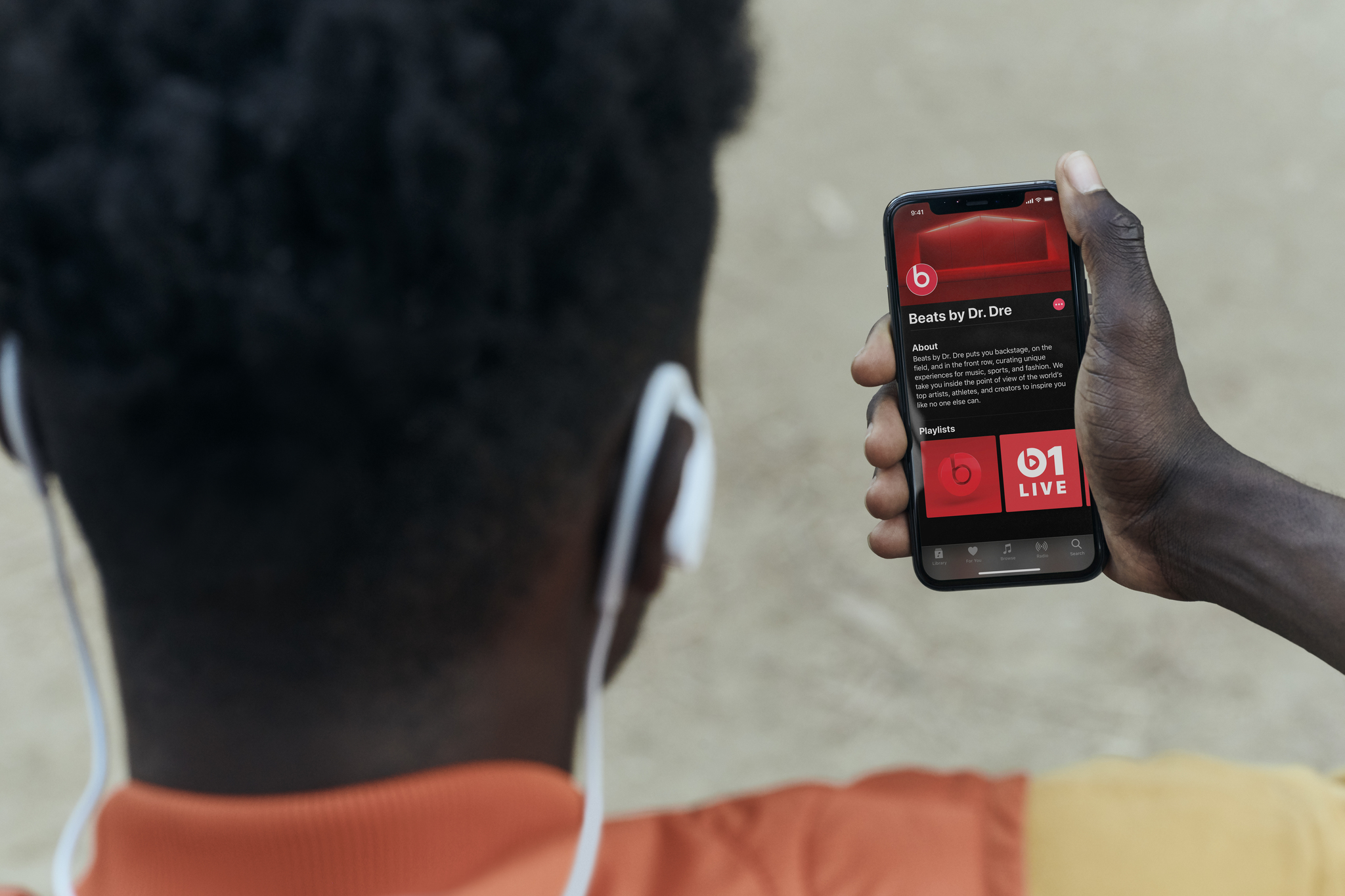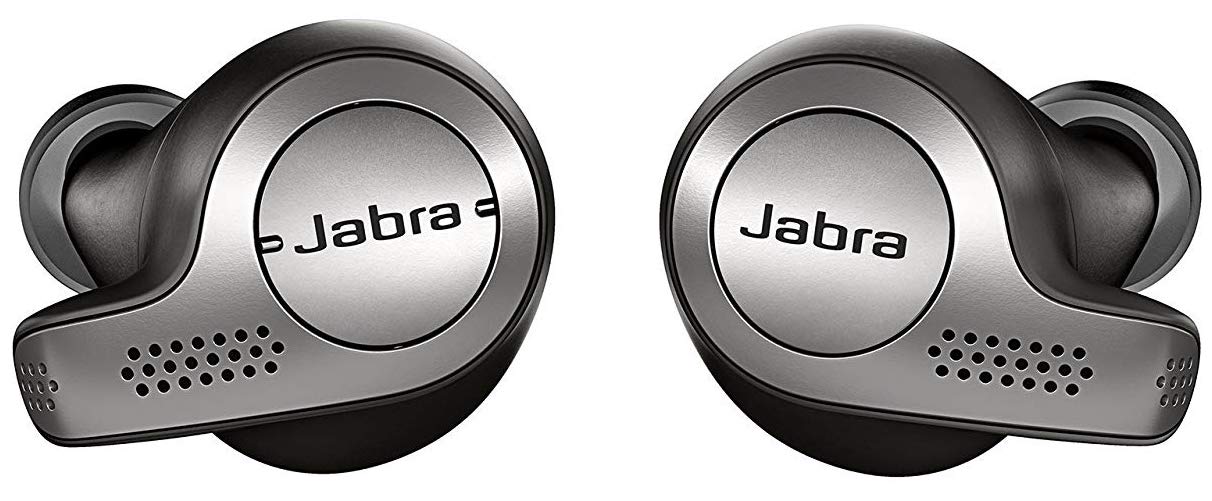Powerbeats 4 vs Jabra Elite 65t: Which should you buy?


H1-chip and great battery life
Featuring the same H1 chip as the second-generation AirPods, the Powerbeats Pro, and AirPods Pro, the fourth-generation Powerbeats have the ability to use "Hey, Siri," the benefits of power efficiency, and super seamless pairing. They also come with multiple ear tips for more flexibility in the fit. However, the ear hook design isn't comfortable for everyone, and they do have a neck wire.
Pros
- H1-chip
- 15-hour battery life
- "Hey Siri" support
- Great bass
- Lightning cable for charging
Cons
- Neck wire
- No sound customization
- Ear hook design isn't for everyone
- More expensive

Tough earbuds
The Jabra Elite 65t are excellent wireless earbuds that pack great sound into a tiny package. They have optional noise isolation, four microphones, and support Alexa and other assistants out-of-the-box. The Elite 65t buds should last around five hours per charge, but the case only provides up to 10 hours of additional battery life before it needs charging itself.
Pros
- Great sound
- Optional noise isolation
- Supports Alexa and other digital assistants
- No ear hooks
- Less expensive
Cons
- No H1-chip
- Weak battery
- Older model
- Micro-USB for charging
Much like the AirPods lineup and the newest products from Beats, the Powerbeats 4 are absolutely fantastic for iPhone users because of the H1-chip. With built-in "Hey, Siri" suppport and incredible power efficiency, you'll be listen to music and have full fuction of your iPhone for 15 hours straight. On the other hand, the Jabra Elite 65t offer more sound customization through the companion app and the ability to hear outside noise if you wish. Of course, while the Jabra Elite 65t are truly wireless (no neck cord to be found), they also only have five hours of battery life in the earbuds themselves and another 10 with the case, which is a bit bulky.
Brand new vs. older model
The $30 difference between the Powerbeats 4 and the Jabra Elite 65t is not huge, but when you start to look at some of the finer details, you'll start to see what that $30 difference truly means. While the Jabra Elite 65t are a super popular pair of headphones — I even have a pair myself — they are starting to show their age when compared to newer hardware.
| Header Cell - Column 0 | Powerbeats 4 | Jabra Elite 65t |
|---|---|---|
| Price | $150 | $120 |
| Battery life | 15 hours | 5 hours (10 additional hours with charging case) |
| Controls | Physical buttons | Physical buttons |
| Hey, Siri | Yes | No |
| Charging method | Lightning | micro USB |
| Connection | Bluetooth 5.0 through H1 Chip | Bluetooth 5.0 |
| Fast charging | 5 mins = 1 hour | 15 mins = 1.5 hours |
| Auto pause | No | Yes |
| Sweat-resistant | Yes, IPX4 | Yes, IP55 |
| Companion App | No | Yes |
The battery life may be the most important difference because let's face it, you want to listen to music, podcasts, audiobooks, and all other audio for as long as possible between charges. The new Powerbeats don't come with a charging case, but have 15 hours of playback time just in the earbuds themselves. That far surpasses the relatively paltry five-hour battery life the Jabra Elite 65t earbuds get.

While they get 10 hours of additional charge with the charging case, you'll have to wait for the charge. The Micro-USB port the Jabra Elite 65t use is just much older techology, and even though the Powerbeats 4 use Lightning and not USB-C, the Jabra Elite 65t can only get about 90 minutes of charge in 15 minutes of charging. When you compare that to the 60 minutes of charge that the Powerbeats can get in just five minutes, it's easy to see that the Powerbeats will spend more time in your ears and less time charging up overall.
When it comes to water-resistance, it may be easy to look at the IP55 rating of the Jarbra Elite 65t and assume that it must be better, but that's not necessairly the full picture. The rating means that they can withstand water jets (albeit not powerful ones), so while its conceiveable you could wear the Jabra Elite 65t into the shower with you — common sense would dictate you shouldn't anyways —that's not really why you buy these headphones. You buy them for the gym. To compare, the IPX4 rating of the Powerbeats 4 means it can handle splashing water, which is more than enough for getting your sweat on in the gym.
Which headphones are for you?
As much as I love my Jabra Elite 65t, I would be hard pressed to recommend them to anyone over a more current offering like the Powerbeats 4.
I would say there's still a good reason for people who really love customization to get the Jabra Elite 65t, since the companion app does offer a customizable EQ band and the abillity to use the HearThrough feature so you can hear the outide world when you're out and about. However, overall, the Powerbeats are a better option for most people.
iMore offers spot-on advice and guidance from our team of experts, with decades of Apple device experience to lean on. Learn more with iMore!
Not only will the Powerbeats 4 last much longer in your ears and charge faster, but they are much more useful to an iPhone user thanks to the H1-chip. You'll pair them to your iPhone, iPad, and Mac much faster, you'll be able to use "Hey, Siri" whenever you want, and they charge with a Lightning cable, which most Apple users have at the ready,

Luke Filipowicz has been a writer at iMore, covering Apple for nearly a decade now. He writes a lot about Apple Watch and iPad but covers the iPhone and Mac as well. He often describes himself as an "Apple user on a budget" and firmly believes that great technology can be affordable if you know where to look. Luke also heads up the iMore Show — a weekly podcast focusing on Apple news, rumors, and products but likes to have some fun along the way.
Luke knows he spends more time on Twitter than he probably should, so feel free to follow him or give him a shout on social media @LukeFilipowicz.
